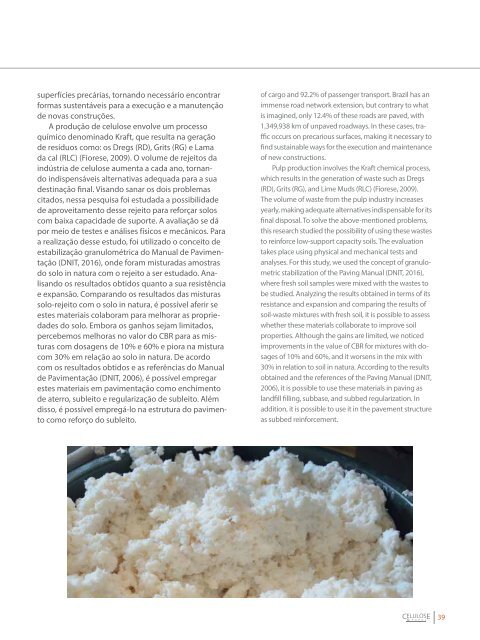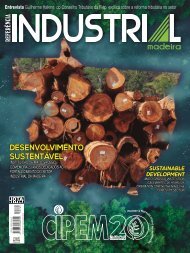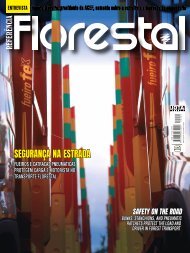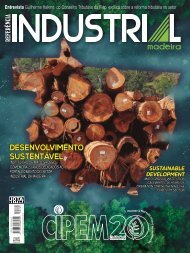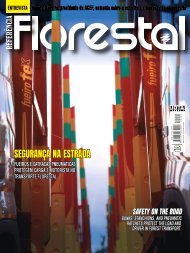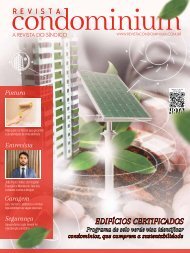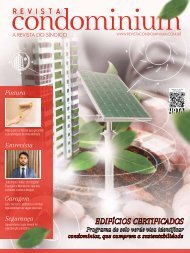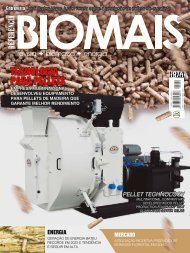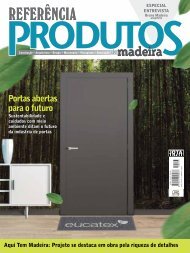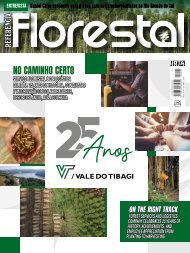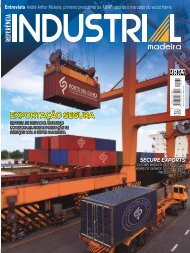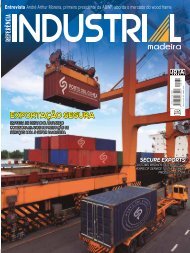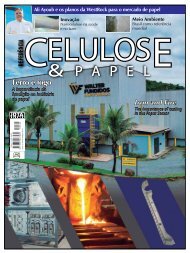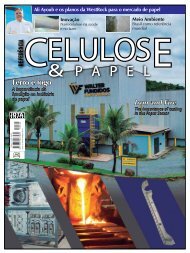You also want an ePaper? Increase the reach of your titles
YUMPU automatically turns print PDFs into web optimized ePapers that Google loves.
superfícies precárias, tornando necessário encontrar<br />
formas sustentáveis para a execução e a manutenção<br />
de novas construções.<br />
A produção de celulose envolve um processo<br />
químico denominado Kraft, que resulta na geração<br />
de resíduos como: os Dregs (RD), Grits (RG) e Lama<br />
da cal (RLC) (Fiorese, 2009). O volume de rejeitos da<br />
indústria de celulose aumenta a cada ano, tornando<br />
indispensáveis alternativas adequada para a sua<br />
destinação final. Visando sanar os dois problemas<br />
citados, nessa pesquisa foi estudada a possibilidade<br />
de aproveitamento desse rejeito para reforçar solos<br />
com baixa capacidade de suporte. A avaliação se dá<br />
por meio de testes e análises físicos e mecânicos. Para<br />
a realização desse estudo, foi utilizado o conceito de<br />
estabilização granulométrica do Manual de Pavimentação<br />
(DNIT, 2016), onde foram misturadas amostras<br />
do solo in natura com o rejeito a ser estudado. Analisando<br />
os resultados obtidos quanto a sua resistência<br />
e expansão. Comparando os resultados das misturas<br />
solo-rejeito com o solo in natura, é possível aferir se<br />
estes materiais colaboram para melhorar as propriedades<br />
do solo. Embora os ganhos sejam limitados,<br />
percebemos melhoras no valor do CBR para as misturas<br />
com dosagens de 10% e 60% e piora na mistura<br />
com 30% em relação ao solo in natura. De acordo<br />
com os resultados obtidos e as referências do Manual<br />
de Pavimentação (DNIT, 2006), é possível empregar<br />
estes materiais em pavimentação como enchimento<br />
de aterro, subleito e regularização de subleito. Além<br />
disso, é possível empregá-lo na estrutura do pavimento<br />
como reforço do subleito.<br />
of cargo and 92.2% of passenger transport. Brazil has an<br />
immense road network extension, but contrary to what<br />
is imagined, only 12.4% of these roads are paved, with<br />
1,349,938 km of unpaved roadways. In these cases, traffic<br />
occurs on precarious surfaces, making it necessary to<br />
find sustainable ways for the execution and maintenance<br />
of new constructions.<br />
Pulp production involves the Kraft chemical process,<br />
which results in the generation of waste such as Dregs<br />
(RD), Grits (RG), and Lime Muds (RLC) (Fiorese, 2009).<br />
The volume of waste from the pulp industry increases<br />
yearly, making adequate alternatives indispensable for its<br />
final disposal. To solve the above-mentioned problems,<br />
this research studied the possibility of using these wastes<br />
to reinforce low-support capacity soils. The evaluation<br />
takes place using physical and mechanical tests and<br />
analyses. For this study, we used the concept of granulometric<br />
stabilization of the Paving Manual (DNIT, 2016),<br />
where fresh soil samples were mixed with the wastes to<br />
be studied. Analyzing the results obtained in terms of its<br />
resistance and expansion and comparing the results of<br />
soil-waste mixtures with fresh soil, it is possible to assess<br />
whether these materials collaborate to improve soil<br />
properties. Although the gains are limited, we noticed<br />
improvements in the value of CBR for mixtures with dosages<br />
of 10% and 60%, and it worsens in the mix with<br />
30% in relation to soil in natura. According to the results<br />
obtained and the references of the Paving Manual (DNIT,<br />
2006), it is possible to use these materials in paving as<br />
landfill filling, subbase, and subbed regularization. In<br />
addition, it is possible to use it in the pavement structure<br />
as subbed reinforcement.<br />
39


